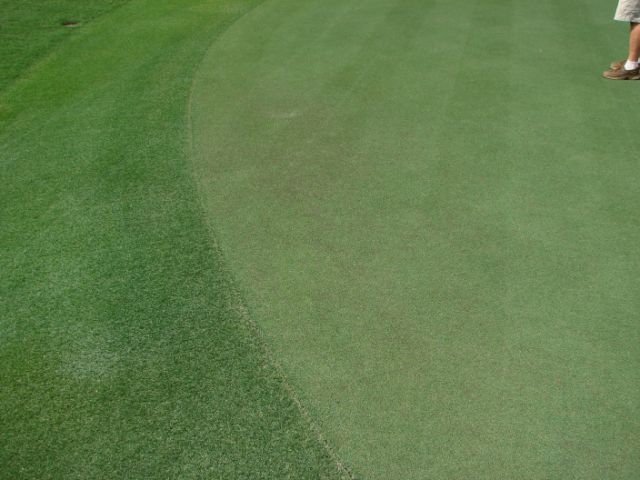A common disease that occurs on bermudagrass greens in our region at this time of year is leaf spot, caused by Bipolaris or Drechslera (formerly known asHelminthosporium). Unlike other diseases, leaf spot generally does not kill bermudagrass greens. Instead, it causes purplish to tan lesions on leaves that can coalesce into small patches and create off-color putting greens. The cool, humid conditions that have occurred in South Florida over the past few weeks have encouraged leaf spot disease outbreaks which have been visible on several Turfgrass Advisory Service visits lately.

|
|
Leaf spot is a nuisance disease on bermudagrass during cool, wet periods and causes putting greens to appear off-color. |
There are a variety of fungicides that control leaf spot (see IFAS Extension publication SS-PLP-9 ), but it can be difficult to maintain disease-free putting greens at this time of year. Preventative treatments applied every 7 to 10 days have been the most effective, but some outbreaks occur in spite of our best intentions. In most years, leaf spot disease subsides as the winter progresses throughout January and February and the need for preventative fungicide programs decreases.
Other recommendations to decrease disease outbreaks including avoiding excess nitrogen fertilization and maintaining a good balance with potassium at this time (1N : 2K). Also, avoid excessive irrigation as well. The need for additional fertility and irrigation should decrease simply due to the decreased turf growth that occurs at this time of year.
Source: Todd Lowe, tlowe@usga.org or 941-828-2625
